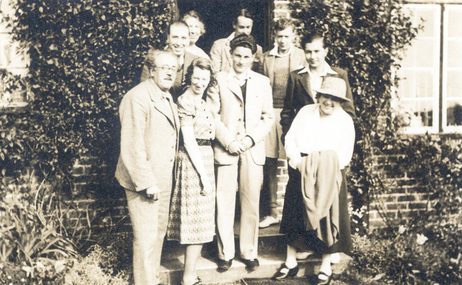Presented by Nicholas Clark
Owen Wingrave arose from a commission that Britten received in 1966 from the BBC. Although he wasn’t by nature a television-watcher, he embraced the challenge of composing an opera for a new medium. He must surely have thought at the time of the potential use of television for reaching out to both his existing audience, and to those who were yet to discover his music. Although often overlooked amongst Britten’s operas, it’s a captivating tale with a strong message that is certainly worth listening to.
Like The Turn of the Screw (1954), Owen Wingave is based on a ghost story by Henry James. It focuses on a young man who decides to reject the traditions of his proud military family in order to follow his conscience and embrace peace. Owen is the last of the Wingrave line and the remainder of his family and several retainers unite at Paramore (the Wingave country seat) to shame him into changing his mind. Only his tutor Mr Coyle and his wife show any true signs of sympathy. Paramore is haunted by the ghosts of Wingrave ancestors – a son who was killed for a perceived act of cowardice and the father who slew him whose own death was unexplained. In James’ original tale the ghosts don’t appear (although their curse leads to a tragic outcome). Britten and his librettist Myfanwy Piper, however, highlight Paramore’s spectres and their tragic story in order to emphasise Owen’s anguish and loneliness. ‘In peace I have found my image, I have found myself’ Owen exclaims in a pivotal aria in Act II just before he encounters the ghosts, but acknowledges that ‘In peace I rejoice amongst men, and yet walk alone’.
The opera was filmed in the Snape Maltings Concert Hall in November 1970 with Britten at the musical helm, assisted by Steuart Bedford. David Myerscough-Jones designed the atmospheric sets and his sketches accentuate the solitude that Owen faces, as well as the eeriness of the ghostly setting. The opera was first screened on BBC2 on the 16 May 1971.


